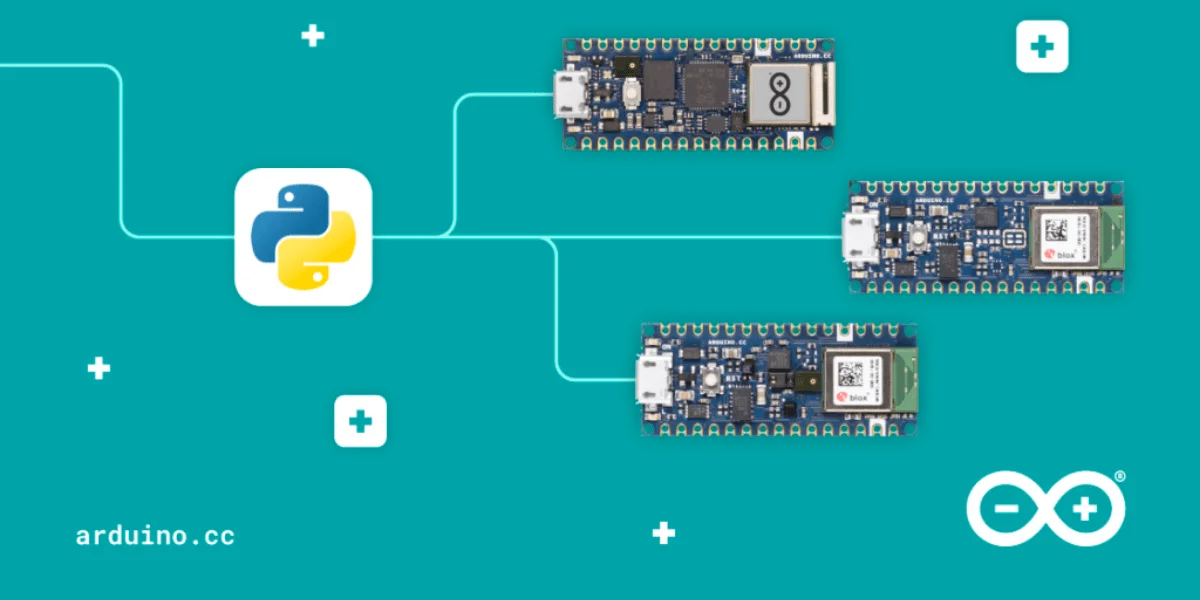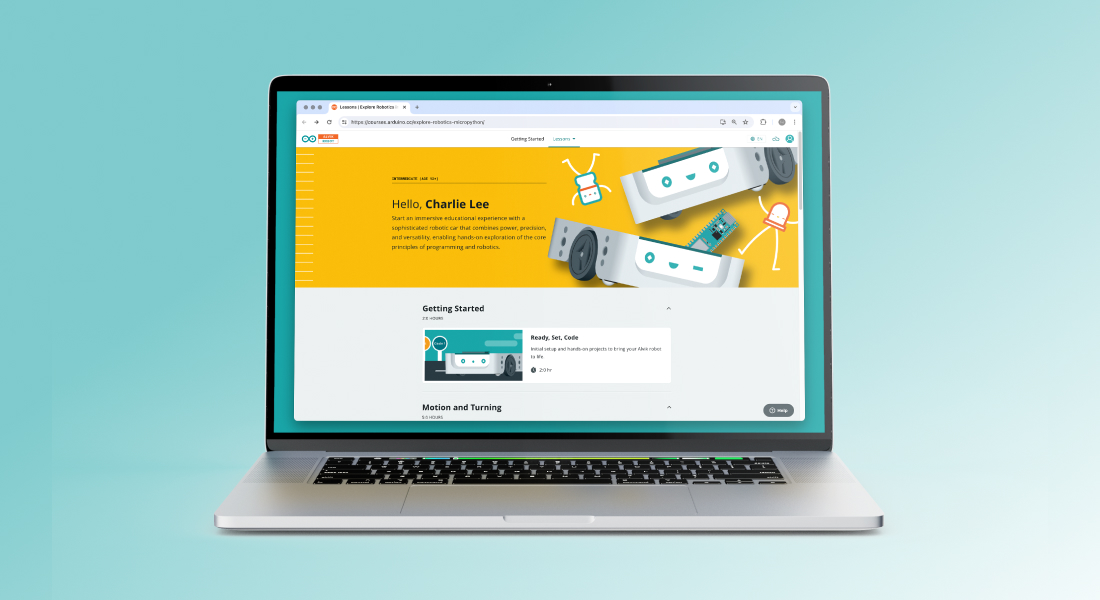Why is MicroPython important in education?

As technology continues to change and shape the modern world, coding is becoming an integral part of STEAM education. In addition to teaching students critical skills they’ll need in a digital world, it provides a fun and engaging learning experience.
When it comes to choosing a programming language to integrate into your teaching and STEAM lessons, MicroPython is a fantastic option. In this article, we’ll explain why MicroPython is important in education and explore the many ways it can benefit children and young people.
What is MicroPython?
MicroPython is a simple-to-read programming language interpreter that’s optimized for microcontrollers and other small systems. As the name suggests, it’s a slimmed-down version of the widely-used Python® programming language.
Just like Python®, MicroPython uses simple and easy-to-read syntax and semantics – you don’t need to be a tech genius to start learning the basics. Unsurprisingly, this makes it a popular coding choice for children and anyone else looking for an accessible route into the fascinating world of programming.

Why is MicroPython in education becoming more popular?
With technology, AI, robotics and machine learning taking center stage over recent years, STEAM education has become a key focus for schools across the globe. Children are now being taught essential skills like coding from an early age, resulting in a sharp increase in the adoption of accessible programming languages like MicroPython.
MicroPython is favored by educational institutions for many reasons, but its use of basic syntax is probably one of its main selling points. It provides an intuitive and beginner-friendly introduction to programming, making it the perfect tool for teachers and students alike.
With the demand for experienced coders at an all-time high, the popularity of MicroPython in education is only likely to grow – particularly when you consider that many countries are already grappling with crippling skills shortages.
Why should children learn MicroPython?
At Arduino we believe coding has the power to transform children’s lives – often in ways you might not expect.
Introducing children to programming languages like MicroPython doesn’t just boost their career prospects; it also helps them develop soft skills and character traits they can apply to any aspect of their lives.
With this in mind, here are just a few of the reasons why we believe children and young people should learn MicroPython:
- Teaches problem-solving skills – Coding challenges children to find the most efficient solution, fostering a trial-and-error approach. This encourages them to think deeply and develop innovative solutions. With practice, they learn to tackle problems from various angles by breaking difficult problems into smaller, more manageable parts – a valuable skill in all aspects of life.
- Encourages critical thinking – Coding, by its nature, requires breaking down problems to evaluate and analyze what is the best solution for them. . This improves children’s logical thinking and teaches them to process and evaluate the information, not just settle for the first answer, which benefits other subjects like math and science.
- Boosts confidence and perseverance – Making mistakes is inevitable while learning to code. The key is to encourage kids to persevere and not give up when faced with challenges. This tenacity translates into other areas of their lives, from schoolwork to social interactions. The sense of accomplishment after overcoming a coding hurdle significantly boosts their confidence.
The benefits of MicroPython in education
Studying MicroPython, be it at middle school, high school or university, can be a great way to introduce children and young people to coding. This intuitive, user-friendly programming language has many benefits in education. Let’s take a look at some of them:
1. MicroPython is accessible and easy to learn
As we’ve already explained, MicroPython's clear and readable code makes it perfect for beginners. The language resembles plain English, which means children can grasp basic concepts quickly and start building their own programs. This fosters creativity and problem-solving as they bring their ideas to life. It also means learners will already have a good foundation of knowledge if they ever want to write code in the widely-used Python® language.
2. It’s versatile and flexible
MicroPython is compatible with a wide range of microcontroller platforms and other small systems. It’s been used successfully in countless projects including Internet of Things devices, robotics, sensors and much more. This flexibility makes it ideal for use across a variety of education settings with different objectives and learning outcomes.
3. Supportive online community and resources
The popularity of MicroPython in education means there’s no shortage of information and resources for both students and teachers. There are also plenty of forums and online communities where students and educators can collaborate, get help, and showcase their projects to others. MicroPython also benefits from Python's rich library ecosystem and extensive support, providing even more learning and development resources.
4. Aids future careers
As an educator, adopting MicroPython into your STEAM teaching means you can give children and young people the skills they need to thrive in a technology-driven world. MicroPython's popularity and broad applications make it a valuable asset, opening doors to exciting career opportunities in areas such as coding, AI, machine learning and robotics.

Why choose Arduino to explore MicroPython and robotics
Now we’ve established why MicroPython is so important in education, let’s consider how you can bring it to life in your classroom with the help of Arduino.
In case you missed it, we recently launched our new MicroPython-compatible robot – Arduino Alvik. Powered by the trusted Arduino Nano ESP32 and boasting an array of high-quality sensors and features, this robust robot is the perfect companion for educators who want to introduce students to MicroPython and robotics.
The integration of the simple and accessible MicroPython programming language means your students will be able to start coding and communicate with robots in a matter of minutes. They can then use their new skills to bring their ideas (and Alvik) to life, immersing themselves in a world of fun and hands-on activities.
Teachers and students also have access to a free, step-by-step Explore Robotics and MicroPython course that aligns with the CSTA and NGSS-aligned curriculum for education.
Lessons cover different subject areas and help children understand the core principles of robotics and MicroPython through project-based learning concepts. Activities include real-world-inspired projects such as smart highways, smart warehouses, and plenty more!
Are you an educator looking to integrate MicroPython into your STEAM teaching? Get hands-one with Arduino Alvik to discover how this game-changing robot can bring your coding lessons to life!